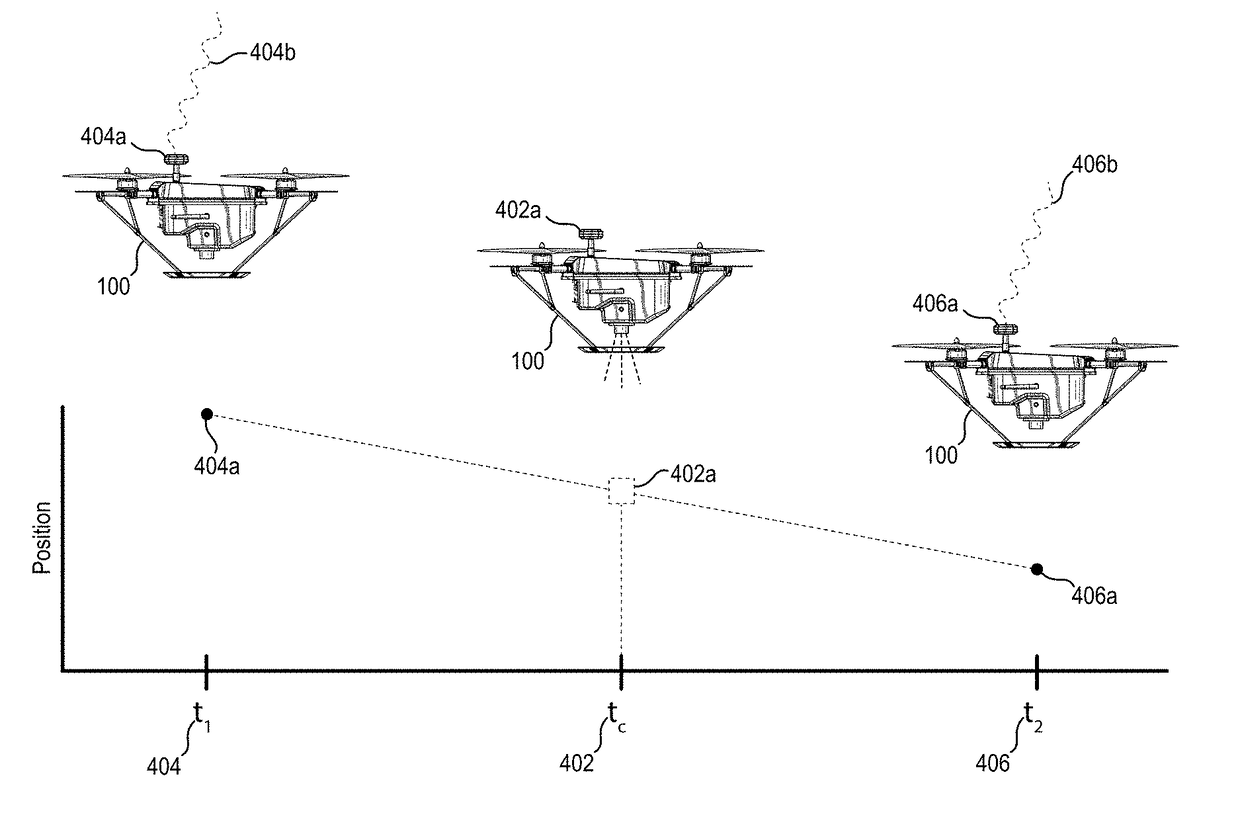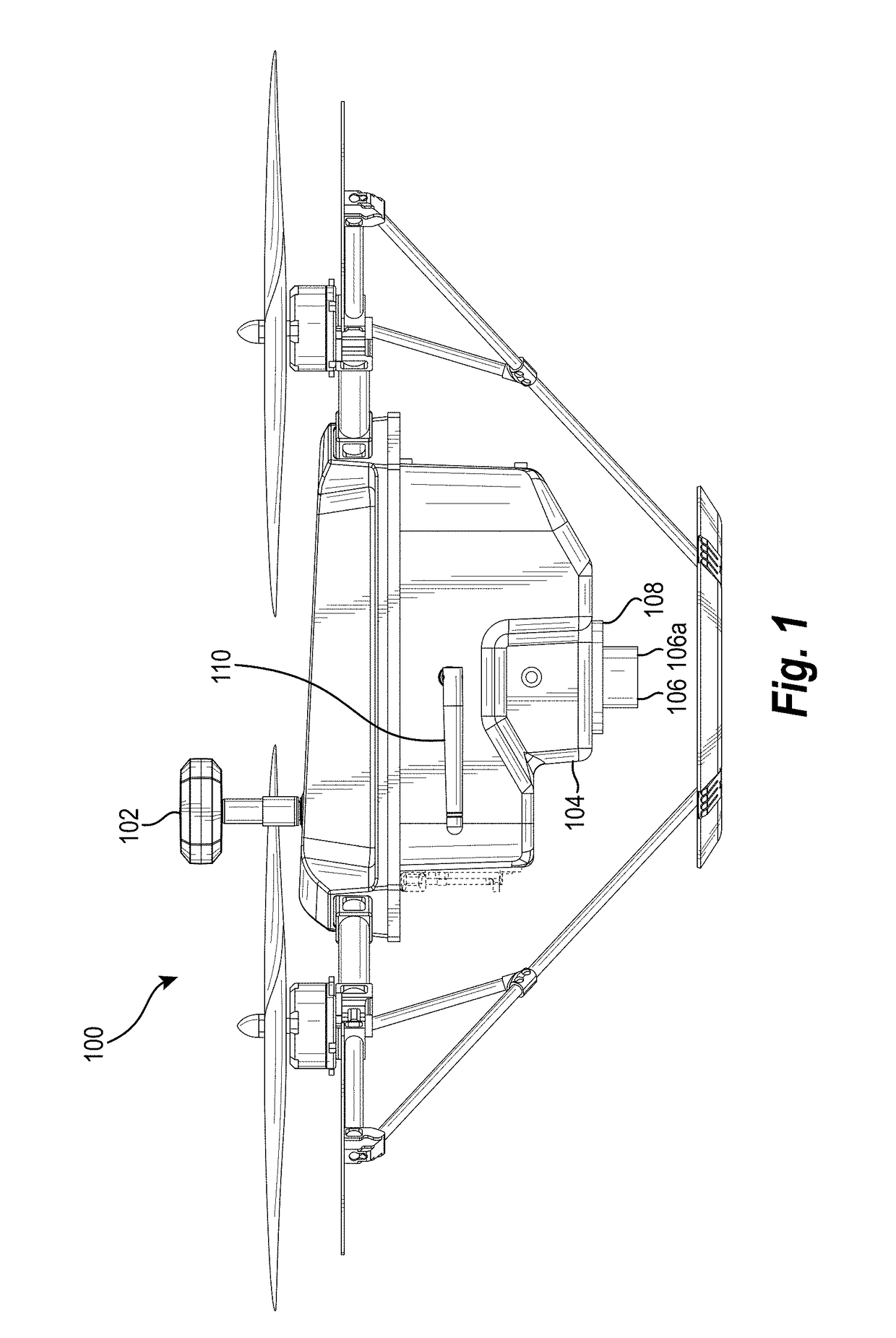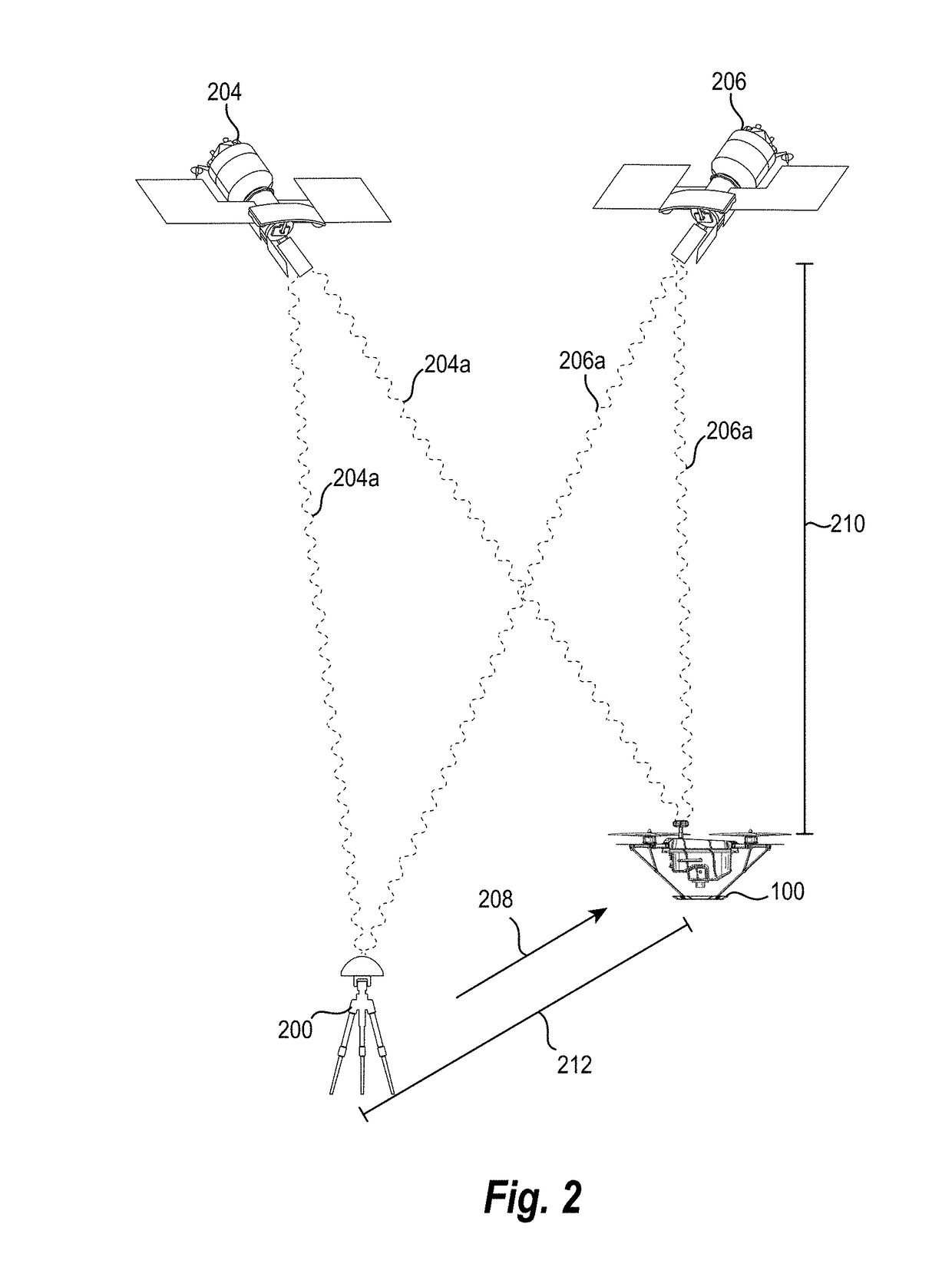Identifying camera position of a UAV in flight utilizing real time kinematic satellite navigation
- Summary
- Abstract
- Description
- Claims
- Application Information
AI Technical Summary
Benefits of technology
Problems solved by technology
Method used
Image
Examples
Embodiment Construction
[0025]The present disclosure includes various embodiments and features of a digital unmanned aerial vehicle (“UAV”) position system and corresponding processes that assist in determining a precise position of a camera affixed to a UAV during a flight mission. In particular, in one or more embodiments the digital UAV position system determines a position of a camera affixed to a UAV at a time when the camera captures a digital aerial image. Specifically, in one or more embodiments, the digital UAV position system determines positions of a UAV based on the number of wavelengths in a carrier signal transmitted between a number of satellites and the UAV based on RTK correction data from one or more reference stations. Specifically, the digital UAV position system uses RTK data from the RTK reference station to solve for the integer number of wavelengths from the UAV's GPS antenna to each of the number of satellites. The digital UAV position system also determines precise times associate...
PUM
 Login to View More
Login to View More Abstract
Description
Claims
Application Information
 Login to View More
Login to View More - R&D
- Intellectual Property
- Life Sciences
- Materials
- Tech Scout
- Unparalleled Data Quality
- Higher Quality Content
- 60% Fewer Hallucinations
Browse by: Latest US Patents, China's latest patents, Technical Efficacy Thesaurus, Application Domain, Technology Topic, Popular Technical Reports.
© 2025 PatSnap. All rights reserved.Legal|Privacy policy|Modern Slavery Act Transparency Statement|Sitemap|About US| Contact US: help@patsnap.com



